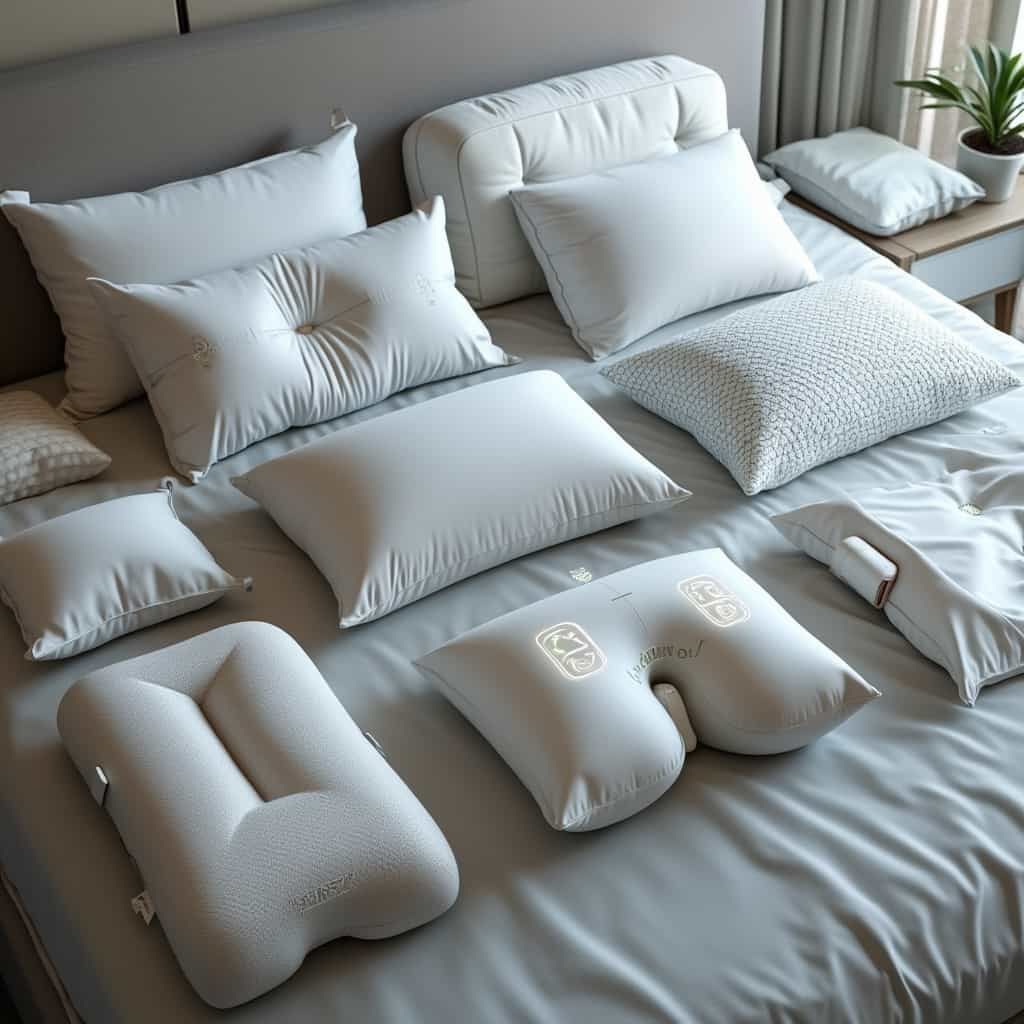Pillows, often overlooked in the realm of sleep technology, are emerging as crucial components in the quest for a rejuvenating rest. As sleep science advances, so does the innovation in pillow technology, with manufacturers worldwide racing to meet the varying needs of consumers. From ergonomic designs to the integration of smart technology, the pillow market is experiencing a revolution.
Among the most sought-after are body pillows and side sleeper pillows. According to the Sleep Foundation, a significant portion of the population prefers sleeping on their side, making side sleeper pillows a staple in many households. These pillows are designed to align the spine correctly, mitigating common issues such as neck and back pain. A notable player in this niche is the MedCline pillow, which boasts an incline system to relieve acid reflux and improve circulation during sleep.
For those plagued by neck pain, the choice of pillow can be particularly impactful. Orthopedic experts often recommend memory foam pillows for their ability to contour and support the neck’s natural curvature. Memory foam, once a material associated primarily with mattresses, has found a robust application in pillow manufacturing due to its heat-responsive adaptability.
Feather pillows, on the other hand, continue to allure consumers with their plush feel and aesthetic appeal. Historically used by the affluent class, such as in the royal courts of Europe, feathers have been synonymous with luxury. Today, manufacturers have been able to refine these pillows, blending them with modern materials to enhance durability and support while preserving that signature softness.
A relatively new entrant in the pillow market is the pillow cube. Gaining popularity among tech-savvy millennials and young professionals, the pillow cube is praised for its unconventional shape designed to perfectly support the head and neck, especially for side sleepers who find traditional shapes lacking.
Children’s pillows are adapted to meet the safety and comfort requirements for the younger demographic. These often feature hypoallergenic materials and are designed to inhibit microbial growth. Pediatric sleep studies often emphasize the importance of proper pillows in supporting a child’s growth and ensuring restful sleep, which is crucial for development.
Market trends indicate a growing consumer interest in sustainable and organic options. As awareness about climate change and ecological footprints increases, pillows made from bamboo, organic cotton, and other renewable resources are capturing attention. Simultaneously, companies are exploring the integration of smart technologies, such as temperature regulation and sleep pattern tracking, making pillows not just restful but also informative.
In recent years, geographic analysis has shown distinct purchasing trends. North America and Europe demonstrate a high demand for memory foam and ergonomic designs, likely due to the increasing focus on healthy lifestyles and sleep hygiene in these regions. Conversely, in Asia, where space efficiency is often a priority, the demand for multifunctional pillows, such as foldable designs, is on the rise. Economic factors and cultural inclinations largely shape these trends.
Price remains a critical factor for consumers. While high-end pillows can reach prices upward of $200, savvy shoppers often seek models that balance quality and affordability. Retailers like Amazon, Bed Bath & Beyond, and specialized sleep stores regularly offer competitive deals, especially during sales events. A quality body pillow, for instance, may range from $50 to $150, depending on the brand and materials used.
Furthermore, customer satisfaction increasingly hinges on post-purchase services such as warranties and return policies. Most well-regarded brands now offer money-back guarantees or extensive trial periods, allowing consumers to assess comfort levels risk-free. Experts suggest that such policies not only enhance customer trust but also boost long-term brand loyalty.
Looking ahead, the future of pillows seems promising. As technological advances continue to interlace with sleep science, it’s likely that pillows will evolve to become more personalized and health-oriented than ever before. Whether it involves integrating more sophisticated sensors or utilizing advanced AI to adapt to sleep patterns, the pillow of tomorrow is set to be a cornerstone of smart living, combining comfort, technology, and sustainability.
You may also like
The World of Beds
This comprehensive article takes you through the latest trends, innovations, and market offerings in the world of beds. From the classic double bed to the futuristic smart bed, we delve into modern models and their features, market trends, geographical buying patterns, and the best deals available in 2024.
The Mattress offer of 2025
As the world of sleep technology advances, 2025 is set to bring a range of innovative mattresses that promise to revolutionize how we rest. From single beds to cooling hybrids, this comprehensive guide explores new models, market trends, and the best price-quality offers.
The Art of Wardrobe Design
As we step into 2025, the world of wardrobe design continues to transform, driven by consumer demand for more personalized, efficient, and technologically integrated storage solutions. This article explores current trends, innovative models, and market dynamics shaping the wardrobe industry, offering insights into the best options for consumers seeking quality and value.
Men's pajamas to give as a Christmas gift
The pajama takes its name from the Persian original term پايجامه pāy-jāme which had the meaning of “garment for the legs”. In the world, pajamas gained ground thanks to the British presence in South Asia in the 18th and 19th centuries. According to the Encyclopedia Britannica, pajamas were introduced to England in the seventeenth century,… Continue reading Men's pajamas to give as a Christmas gift
